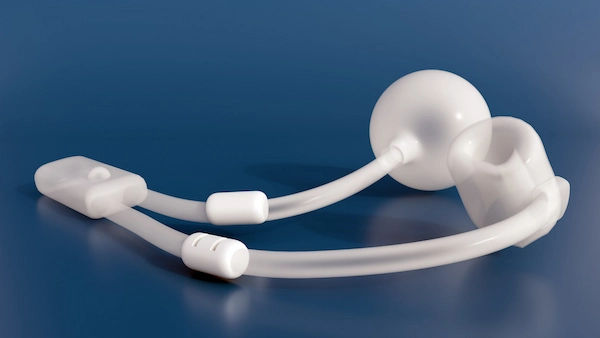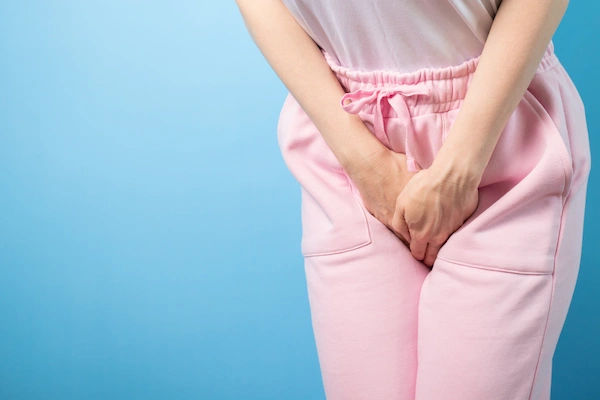Guide to Urinary Incontinence In Women: Types, Causes, and Treatments
Learn about urinary incontinence in women, including its types, causes, and effective treatments. Discover lifestyle changes, pelvic floor exercises, and medical options to regain bladder control and confidence.

Written by Dr. Dhankecha Mayank Dineshbhai
Reviewed by Dr. J T Hema Pratima MBBS
Last updated on 16th Sep, 2025

Introduction
Urinary incontinence, the unintentional leakage of urine, is a surprisingly common condition that affects millions of women worldwide. Yet, despite its prevalence, it often remains a silent struggle, shrouded in embarrassment and misconception. If you find yourself crossing your legs before a sneeze, mapping out every bathroom on your route, or avoiding activities you love for fear of an accident, know this: you are not alone, and this is not an inevitable part of aging or being a woman. This guide aims to demystify urinary incontinence in women, empowering you with knowledge about its various types, underlying causes, and, most importantly, the numerous effective treatments available. From simple lifestyle adjustments to advanced medical interventions, regain control is not just a possibility—it's a probable outcome with the right information and support.
What is Urinary Incontinence? It's More Common Than You Think
Urinary incontinence (UI) is defined as any involuntary leakage of urine. It's a medical condition, not a normal life stage, and its impact ranges from a minor nuisance to a severely debilitating problem that affects physical, psychological, and social well-being. The scale of the issue is vast. It's estimated that over 25 million adult Americans experience some form of UI, with women being twice as likely as men to be affected. Rates significantly increase with age, but it can also affect young women, especially after childbirth.
Breaking the Stigma: You Are Not Alone
Many women suffer in silence due to feelings of shame or the belief that nothing can be done. This stigma prevents them from seeking help, unnecessarily diminishing their quality of life. The first step toward management is understanding that UI is a medical issue with medical solutions. Talking to a healthcare provider is a courageous and crucial act.
Consult a Urologist for the best advice
The 5 Main Types of Female Urinary Incontinence
Identifying the type of incontinence is key to finding the right treatment. The symptoms can often overlap.
Stress Incontinence: The Leak with Pressure
This is the most common type. It occurs when physical pressure (stress) on the bladder causes leakage. The underlying cause is weakened pelvic floor muscles or a weakened urethral sphincter. Leakage happens without an urge to urinate and is typically in small amounts.
Examples: Leaking when you cough, sneeze, laugh, exercise, or lift something heavy.
Urge Incontinence: The Overactive Bladder
Often called overactive bladder (OAB), this type involves a sudden, intense urge to urinate followed by an involuntary loss of urine. You may need to urinate frequently, including throughout the night (nocturia). It's caused by involuntary contractions of the bladder muscle. Example: Leaking on the way to the bathroom after a sudden, uncontrollable urge.
Mixed Incontinence: A Combination of Both
This is a combination of stress and urge incontinence symptoms. It's very common, particularly in older women, where you might leak with a cough and experience strong, sudden urges.
Overflow Incontinence: The Constant Dribble
This occurs when the bladder doesn't empty completely, leading to frequent or constant dribbling of urine. It feels like you never quite finish voiding. It's less common in women and is often due to a weakened bladder muscle or a blockage.
Functional Incontinence: When Other Barriers Interfere
Here, a physical or mental impairment prevents you from reaching the toilet in time. Your urinary system may be fine, but arthritis, a wheelchair, or dementia, for example, create the barrier.
What Causes Bladder Leakage in Women? Key Risk Factors
Women are predisposed to UI due to their unique anatomy and life experiences.
Life Events: Pregnancy, Childbirth, and Menopause
Pregnancy & Childbirth: The weight of the fetus and the process of vaginal delivery can stretch and weaken pelvic floor muscles and damage nerves that control the bladder.
Menopause: The decline in estrogen after menopause can deteriorate the lining of the urethra and bladder, weakening tissues and reducing muscular support.
Lifestyle and Health Factors
Obesity: Excess weight increases pressure on the bladder and surrounding muscles.
Other Conditions: Neurological diseases (Parkinson's, MS), diabetes, and chronic constipation can contribute.
Hysterectomy: This surgery can sometimes damage supporting pelvic floor structures.
High-Impact Sports: Can contribute to long-term stress on the pelvic floor.
Getting a Diagnosis: What to Expect at the Doctor's Office
Seeking a diagnosis is the first step to recovery. A doctor will take a detailed history and likely perform a physical exam.
The Importance of a Bladder Diary
You may be asked to keep a bladder diary for several days. This involves recording what you drink, when you urinate, the amount, and when leakage occurs. It's an invaluable tool for identifying patterns.
Physical Exams and Diagnostic Tests
Physical Exam: Often includes a pelvic exam to assess muscle strength and check for prolapse (when organs drop into the vagina).
Urinalysis: Checks for infection, blood, or other abnormalities.
Post-Void Residual Measurement: An ultrasound checks how much urine is left in your bladder after voiding.
Urodynamic Testing: A series of tests that measure bladder pressure and flow to see how well your bladder and urethra are storing and releasing urine.
If your symptoms persist beyond two weeks, consult a doctor online with Apollo24|7 for further evaluation and to discuss your bladder diary.
Treatment Options for Female Bladder Control Issues
Treatment is highly individualised, progressing from conservative to more invasive options.
Lifestyle Modifications and Behavioral Therapies
These are always the first line of defense.
Fluid Management: Drinking the right amount (not too little, not too much) and avoiding bladder irritants like caffeine, alcohol, and acidic foods.
Weight Loss: Even a 5-10% reduction in body weight can dramatically improve symptoms.
Bladder Training Techniques
This involves scheduled toilet trips and using techniques to suppress urgency, gradually increasing the time between voids to retrain your bladder.
Dietary Changes for Bladder Health
Identifying and eliminating personal trigger foods is a key strategy for managing urge incontinence symptoms.
Pelvic Floor Muscle Therapy: The Power of Kegels
Strengthening the pelvic floor muscles is the cornerstone treatment for stress incontinence.
How to Perform Kegel Exercises Correctly
Identify the right muscles: Stop urination midstream (only to identify, not as an exercise).
Tighten these muscles and hold for 5 seconds.
Relax for 5 seconds.
Aim for 10-15 repetitions, 3 times a day.
Consistency is key—results can take 4-6 weeks.
Medications for Urge Incontinence
Anticholinergic drugs or beta-3 agonists can help relax the bladder muscle and reduce urgency symptoms. A doctor can determine if these are right for you.
Medical Devices: Pessaries for Support
A pessary is a silicone ring inserted into the vagina to support the bladder neck and urethra, preventing leakage from stress incontinence.
Surgical Procedures for Lasting Relief
For cases that don't respond to other treatments, surgery can be highly effective. Options include sling procedures (placing a supportive mesh under the urethra), colposuspension, or even Botox injections into the bladder muscle for severe OAB.
If your condition does not improve after trying these methods, book a physical visit to a urologist or gynecologist with Apollo24|7 to discuss surgical options.
Managing Incontinence Daily: Products and Tips
While seeking treatment, various products can manage leaks and protect your clothing and confidence.
Absorbent Pads & Protective Underwear: From thin liners to full absorbent underwear, modern products are discreet and highly effective.
Skin Care: Use gentle, pH-balanced cleansers and barrier creams to protect skin from moisture.
Practical Tips: Wear clothing that is easy to remove, carry a change of clothes, and don't reduce fluid intake to dangerous levels.
Prevention: Can You Stop Urinary Incontinence?
While not all UI is preventable, you can significantly reduce your risk:
Maintain a healthy weight.
Practice Kegel exercises regularly, especially before and after pregnancy.
Treat constipation promptly.
Avoid heavy lifting, or use proper form (engage your core, not your pelvic floor).
Eat a high-fiber diet and stay hydrated.
Conclusion
Living with urinary incontinence can feel isolating, but it is a conquerable challenge. Understanding the types, causes, and treatments for bladder leakage is your first powerful step toward reclaiming your comfort and confidence. Remember, this condition is not a life sentence. With a proactive approach—from daily Kegels and lifestyle tweaks to consulting a specialist for advanced care—you can manage or even eliminate symptoms. You deserve to laugh, exercise, and live your life freely, without worry. Take that first step today by speaking with a healthcare professional who can guide you on your path to dryness and a better quality of life.
Consult a Urologist for the best advice
Consult a Urologist for the best advice
Dr S K Singhanina
Urologist
25 Years • MBBS/MS/DNB AND MCH UROLOGY
Guwahati
Apollo Clinic Guwahati, Assam, Guwahati

Dr. Ramesh H
Urologist
16 Years • MBBS, MS , Mch( Urology)
Bengaluru
Apollo Clinic, JP nagar, Bengaluru

Dr. Pavan Kumar S K
Urologist
11 Years • MBBS, MS , Mch( Urology) DNB (Urology)
Bengaluru
Apollo Clinic, JP nagar, Bengaluru

Dr. Sudhakar G V
Urologist
25 Years • MBBS, MS(Gen.Surgery), DNB Urology
Bengaluru
Apollo Clinic, JP nagar, Bengaluru

Dr. Pradeep Champawat
Urologist
10 Years • MBBS, MS, DNB Urology
Delhi
Apollo Hospitals Indraprastha, Delhi
(175+ Patients)
More articles from Urinary Incontinence
Frequently Asked Questions
1. Are bladder leaks normal?
While common, bladder leaks are not 'normal.' They are a sign of an underlying issue with bladder control that can often be treated or managed effectively. You should not have to accept them as a fact of life
2. Can urinary incontinence be cured?
Many types of incontinence can be completely cured, especially with proper treatment like physical therapy or surgery. For others, symptoms can be managed so effectively that they no longer impact daily life.
3. I do Kegels but don't see improvement. Why?
It's very common to perform Kegel exercises incorrectly, using abdominal or buttock muscles instead of the pelvic floor. A physical therapist specialising in pelvic health can provide biofeedback to ensure you're engaging the correct muscles.
4. What are the best exercises for bladder control?
Kegel exercises are the gold standard. Other beneficial activities include low-impact exercises like walking, swimming, and yoga, which avoid puttng excessive pressure on the pelvic floor.
5. When should I be concerned about frequent urination?
If frequent urination is disrupting your sleep (getting up more than twice a night), causing you distress, or accompanied by pain, fever, or blood, it's time to see a doctor for a urinalysis and further evaluation.




